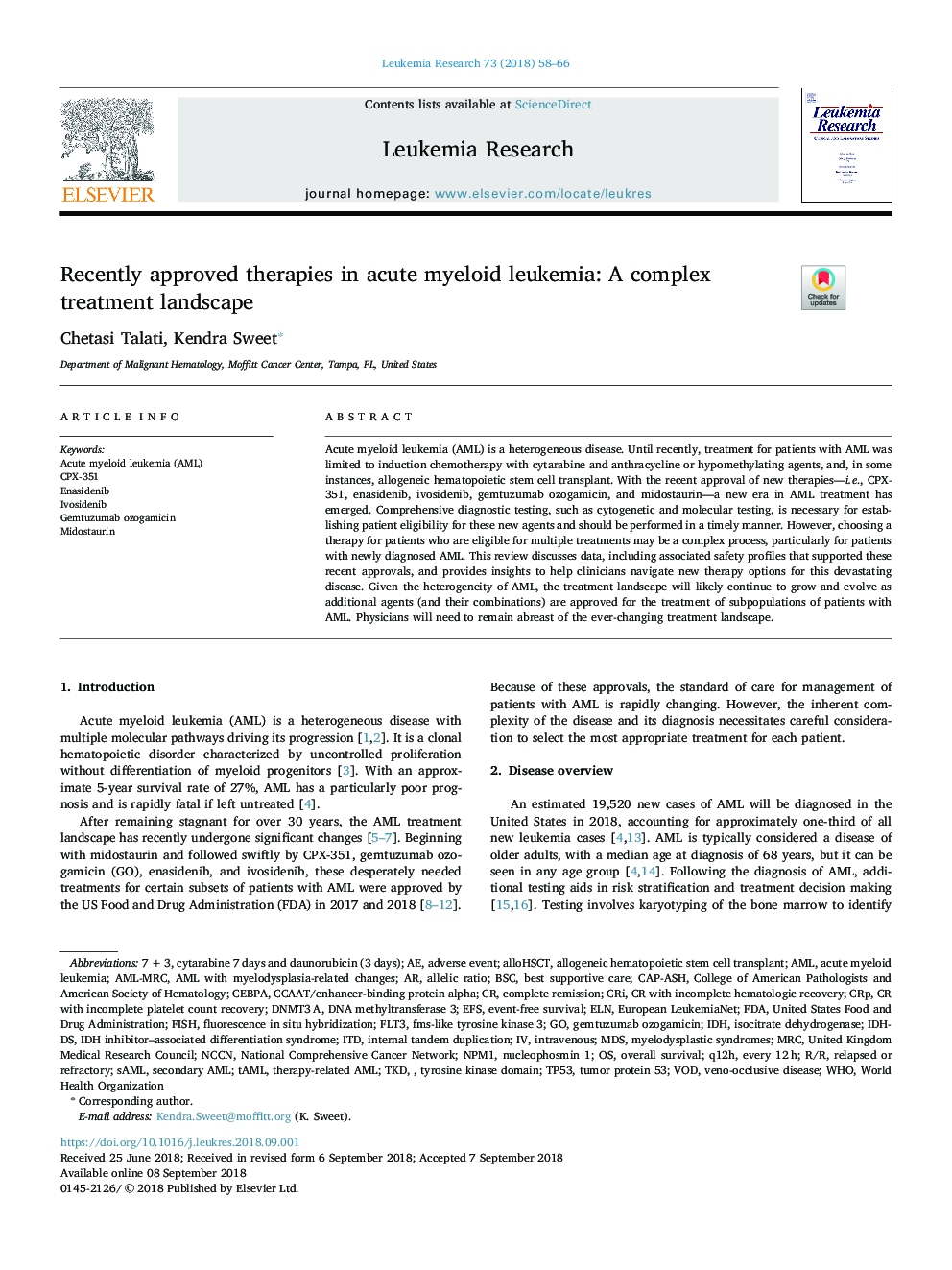| Article ID | Journal | Published Year | Pages | File Type |
|---|---|---|---|---|
| 10143106 | Leukemia Research | 2018 | 9 Pages |
Abstract
Acute myeloid leukemia (AML) is a heterogeneous disease. Until recently, treatment for patients with AML was limited to induction chemotherapy with cytarabine and anthracycline or hypomethylating agents, and, in some instances, allogeneic hematopoietic stem cell transplant. With the recent approval of new therapies-i.e., CPX-351, enasidenib, ivosidenib, gemtuzumab ozogamicin, and midostaurin-a new era in AML treatment has emerged. Comprehensive diagnostic testing, such as cytogenetic and molecular testing, is necessary for establishing patient eligibility for these new agents and should be performed in a timely manner. However, choosing a therapy for patients who are eligible for multiple treatments may be a complex process, particularly for patients with newly diagnosed AML. This review discusses data, including associated safety profiles that supported these recent approvals, and provides insights to help clinicians navigate new therapy options for this devastating disease. Given the heterogeneity of AML, the treatment landscape will likely continue to grow and evolve as additional agents (and their combinations) are approved for the treatment of subpopulations of patients with AML. Physicians will need to remain abreast of the ever-changing treatment landscape.
Keywords
European LeukemiaNetq12hNPM1FLT3alloHSCTCPX-351CEBPAELNVODTP53IDHTKDNCCNSAMLITDEFsMRCBSCMDSFDACRIR/RTAMLAMLSecondary AMLMidostaurinCCAAT/enhancer-binding protein alphaUnited States Food and Drug AdministrationIsocitrate dehydrogenaseEvent-free survivaloverall survivalBest supportive careVeno-occlusive diseaseinternal tandem duplicationIntravenouscomplete remissionWorld Health OrganizationMyelodysplastic syndromesNational Comprehensive Cancer Networkadverse eventfluorescence in situ hybridizationacute myeloid leukemiaAcute myeloid leukemia (AML)FMS-like tyrosine kinase 3FishNucleophosmin 1tumor protein 53CRPAllogeneic hematopoietic stem cell transplantWHOGemtuzumab ozogamicin
Related Topics
Life Sciences
Biochemistry, Genetics and Molecular Biology
Cancer Research
Authors
Chetasi Talati, Kendra Sweet,
